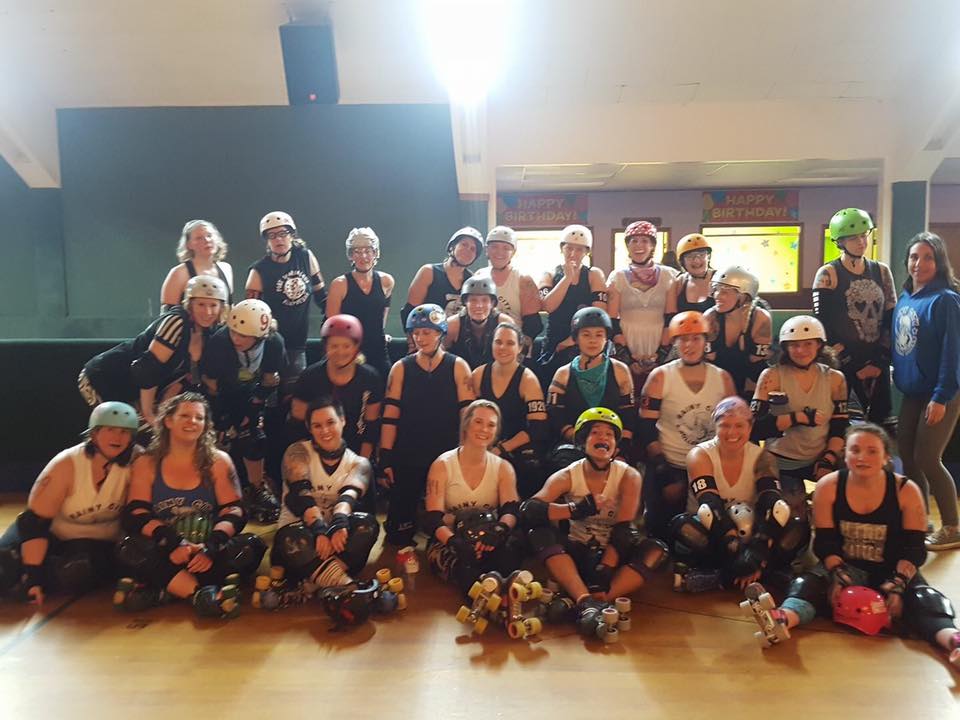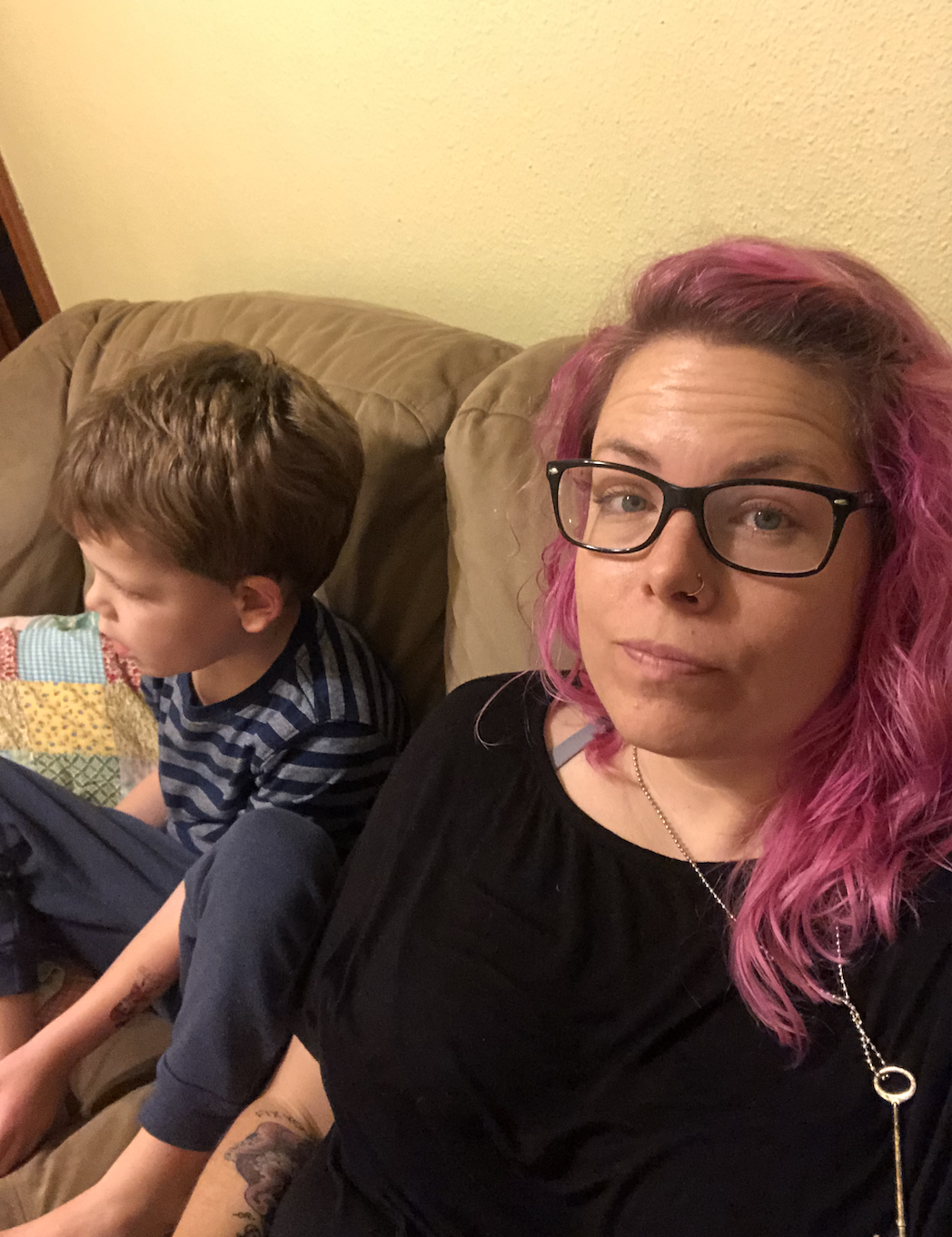
If you decided to ask me — which you didn’t — what the most important aspect of in-season training is, you’d probably be surprised by my answer.
Because the absolutely, positively, MOST important aspect of cross-training during your season is:
GETTING ENOUGH MFING REST.
As a personal trainer, I obviously think that what you do in the gym is a large part of having success on the track. But I’d be lying if I told you it was more important than your energy management. When you’re considering your in-season training, you have to start with an understanding of how to manage your energy. Period.
That being said, there are several ways in which your training can (and should) change as you transition to your season and through your season. And I’ve compiled these in answer to a question I got from a skater on my email list:
What should an off-skates training plan look like now that the season has started? What’s a good balance to maintain strength while attending skating practices? Should the focus be more on power?
1) Get enough rest. Period.
(Am I using too many “periods?”)
I know I already said this but it is super duper critical that you put your rest first. This includes making sure that you’re getting the appropriate amount of sleep per night AND that you are taking downtime during the day to help your body (and mind and emotions) recover. Yes, you need both. You may be thinking to yourself, “But Prime… I have so much to do. I can’t take downtime during the day.” Well, then you especially need it. Trust me.
A few years ago, I wrote a blog about violinists. I broke down a 1993 study on the value of hard work versus intrinsic talent, how good and great violinists use their time, and the connection between practice and fatigue. You should definitely read it but I wanted to draw attention to the most important part here: the more intensely and deliberately you practice, the more exhausting it is.
There’s a lot of science I could vomit at you here but the basics of it are that (A) practice — and cross-training — is physically and mentally exhausting so you (B) definitely need to get sleep but your sleep has to (C) be adequate for proper mental and physical recovery which means that you have to (D) sleep for a significant amount of time strung together because (E) different sleep stages provide different types of recovery for your body and your brain. It’s also important to provide downtime during the day (even if you’re getting adequate sleep) so that your body doesn’t rev up into super stressed, fight-or-flight mode which will just cause your body to further accumulate fatigue.
I guess what I’m really saying is that you probably have to cross-train less than you think you do and sleep and rest more than you think you do. So next time you’re beating yourself up for not going to the gym after that tournament weekend, just don’t. Because sleep and rest are important too.
You can’t do shit if you’re tired as fuck.
2) Throttle back on certain aspects of your training.
Once you are officially IN your season and you have your first game on the horizon or are regularly playing a game (or more!) per month, there are some things you can start to drop from your cross-training. Not because they aren’t still valuable but because you have to use your time and energy efficiently and cuts have to be made somewhere.
(Seriously, though. You don’t need to be spending 2 hours in the gym every time that you go trying to set a deadlift PR.)
Here are a few aspects of training you can throttle back. 🚨 Unpopular opinions ahead: 🚨
- Super heavy unilateral exercises — like I said, chasing PRs in the big 3 lifts (squat, deadlift, bench press) is not necessary during the season. You can do it if you absolutely want to but it’s not the most useful type of training during this time.
- Gobs and gobs of cardio — especially interval training. I know, I know. It’s a skater’s bread-and-butter but the truth is that most of us are getting a buttload of interval cardio training at practices and doing EVEN MORE in the gym is wildly energy depleting. Most skaters can benefit from doing some short form of threshold cardio once a week or once every other week. But if your lungs are not the thing holding you back during games, you likely don’t need to spend a lot of additional time here.
- 4 (or more) training days per week — you probably don’t need it on top of your practices and it’s just going to burn out your engine even faster. I’m not even a fan of training 3 times a week for most in-season skaters. Most of the in-season skaters that work with 1-on-1 are training 2 days a week in conjunction with their practices and they’re doing great. Super great.
I know that a lot of these pieces of advice are counter to what we often hear bandied about in skating circles or from our teammates and friends. But, just like I said in the first point, energy management is key. You are regularly practicing and competing in a sport that requires HUGE energy expenditure. And the sport is the point, right? So we don’t want to be expending tons of energy elsewhere. We only want to be doing what will support our ability to expend those huge amounts of energy on the track in efficient and effective ways.
3) Beef up other aspects of your training.
Now that you know what’s off the table, you might be wondering what’s left. No massive PRs. No running miles. No doing 45 minutes of HIIT. (Which, by the way, it’s not HIIT if you can do it for 45 minutes.)
As I alluded to above, your cross-training needs to be supportive of your skating. It’s always useful to ask yourself the question, “What would best support my skating?” because the answer is going to be different for everyone. Identify your keystone weakness — not necessarily your biggest weakness but the one that holds you back — and use it to figure out where you most need to focus your training.
FOR EXAMPLE: My biggest weakness is probably that I’m slow. Much slower than most of my team in an all-out sprint. But on the track, being slow doesn’t impact my game the most. Not keeping my hips down does. To really make a difference in my game, I’d need to focus on my hips during the pre-season. Not my speed. This means that a lot of my in-the-gym cross-training and even my on-the-track warm-up time is going to be dedicated to working on keeping my hips down.
However, there are some general places that nearly every skater will benefit from adding to their in-season training:
- Mobility and prehab — you probably have your own problem joints and muscles that need to be focused on so do that. Continue any exercises you may have been assigned by a PT and also narrow in on shoulder mobility and range of motion, hip mobility, and ankle mobility. You can add these things into your warm-up, attend yoga sessions, or create separate training days solely around your prehab. Just put it in there. And keep doing it all the time.
- Single-sided strength maintenance — this is to help you maintain your strength, balance, and core stability. You can rely on lighter weights and higher reps which makes it less mentally and physically taxing while still getting a good training day in. This goes for single-sided leg work (split squats, single-leg Romanian deadlifts, etc.) as well as single-sided upper body work (one-arm rows, McGill press, one arm strict press, etc.) and anti-rotation core work (palloff press, dead bug, bird dog, etc.). Roller derby is not a game played standing on both feet at once so during the season we need to train for your body to be successful at that.
- Skating specific moves — finding exercises that directly carry over to what you’re currently doing on skates (or what you plan to do in the future) is important and during the season is the time to work on it. Mostly because you get a double dose of the skill by doing it on-skates and then training for it off-skates. Some examples of this are the drills in Jumping January or almost anything you see on Jilleanne Rookard’s Instagram (but keep in mind that she is an Olympic athlete and wildly strong so you may need to modify). The goal here is NOT to exactly mimic what you would be doing on skates, it’s to build up the muscles that will make the movement on skates easier.
It may seem like a lot to add but it’s actually not to difficult to throw together a training day that starts with mobility and prehab, moves into strength maintenance, and ends with sport-specific drills.
4) Something different.
This part is optional, of course, but I talk to a lot of skaters that start to get antsy when they can’t “see” improvement in the gym. I get it. It’s actually not about improvement in the gym during the season, it’s about improvement on the track. But that improvement can come in such small increments that it feels a little bit frustrating. That’s why I also recommend building toward something not related to skating where you can see improvement in the gym, too.
It might be increasing your box jump (slowly, over time). Or getting to 10 full pushups. Or doing your handstand. Training for all of these things gives you more direction on how to put your plan together, will carry over to skating and overall strength, and helps you see improvement without having to be on-skates.
What non-skating goal do you have? Work toward that, too.
Want More?
If you’re interested in more exclusive content, access to my FREE resource library, and the slightly weird workings of my inner mind, you can sign up for the Iron Octopus Fitness email list HERE. Wherein I harass you weekly with all things intelligent cross training, mindset, and…other.

